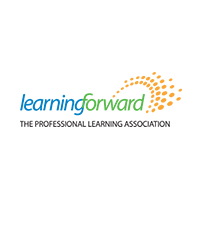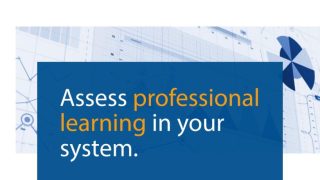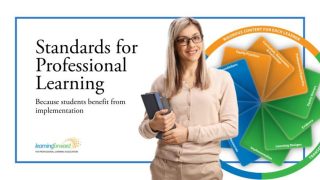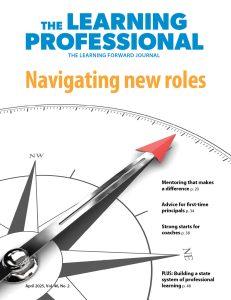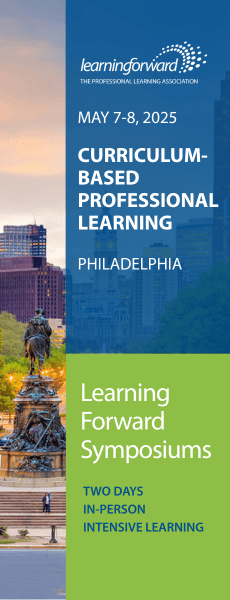Conferences are key components of educator professional development strategies because of the way such events can assemble a diverse array of experts, practitioners, and researchers from which attendees can choose and design their own learning experiences. Additionally, opportunities for networking and building professional relationships are high-value activities for enhancing knowledge and skills to improve practice. Conferences can also provide great opportunities to learn new information and strategies to improve leading, teaching, and learning. It is no wonder that all of the possibilities can leave educators feeling overwhelmed.
To make the most of a conference experience, Learning Forward recommends several strategies for attendees to complement and extend the learning. Our free Taking Action Toolkit is used each year before, during, and after our Annual Conference to organize, reflect, and follow-up on conference learning. While it was designed for Learning Forward’s conference, the toolkit can be used for any learning event.
Preparing for the conference — do the work
In the weeks before conference, develop your event gameplan. Find time to focus on what is your clear purpose for attending the conference and how the experience will affect your skills and knowledge so that you’re better equipped to achieve the outcomes you have for yourself, your team, and your students.
What is an area of your teaching practice or leadership that you are working to strengthen? Why is this important? How might you be able to apply or implement your conference learnings into your work? These are good questions that can help guide your thinking when you’re using Learning Forward’s toolkit goal-setting template.
Another step in developing your gameplan is mapping out conference sessions that align with your learning goals. Conference guides can provide a wealth of information on sessions. Some, like Learning Forward’s online guide, provide detailed descriptions for every session and offer a search tool that helps attendees locate sessions by topic, presenter, area of focus, and audience.
For Juliet Correll, planning for Learning Forward’s 2022 Annual Conference in December began in the summer. Correll, vice president for professional learning at Learning Without Tears, wrote about her team’s approach to conference planning and implementation in The Learning Professional’s August 2023 issue.
“As a teacher, I knew that continuing to build background before the conference would provide deeper and broader context for new learning to attach and resonate,” Correll wrote. “I shared content resources here and there, including purchasing a curated book for each team member based on their interests and roles, and we talked about starting book circles in the fall, coming out of our busy pre-back-to-school season.”
In parallel, Correll’s teammates selected concurrent conference sessions, “mapping them on a spreadsheet to see who was planning to learn about what and when to ensure coverage across the key topics and themes that were most important to us.”
Conference keynotes are designed to inspire, encourage, and educate. The Learning Professional magazine publishes deep-dive Q&As with keynote speakers prior to Learning Forward’s annual December event so attendees can familiarize themselves with speakers’ expertise and point of view.
Having a conference gameplan will help you “avoid shiny objects” and make good choices for sessions serving up information that will best fit your needs and are most likely to result in action, according to Jackie Wynkoop, who gave education conference tips and recommendations in her January 31, 2024, “PL Playbook” podcast — including a shoutout to Learning Forward’s upcoming conference Dec. 8-11 in Denver.
Plan on how you will capture, share learnings & put them into action
After you’ve established conference learning goals and selected your sessions, you will want to adopt a system for capturing ideas and concepts from the sessions and consider how you will share your learnings and ideas for putting them into action.
Learning Forward’s conference toolkit includes tools and templates for taking great notes during sessions, debriefing on your experiences, sharing and prioritizing ideas learned from the event, and documenting a post-event action plan. Assembling and familiarizing yourself with these tools and how they can help before you attend the conference will enhance your ability to put them to good use during and after the conference.
Learning Forward suggests using our conference as a starting point in a process that will ultimately improve educator practice and results for students. Sharing successes and learnings with peers is one way educators foster shared knowledge and contribute to a culture of collaborate inquiry in their schools and systems.
Ultimately, learning from successful practitioners and connecting with evidence-backed best practices at a conference can pay off.
In Worthington City Schools, Ohio, professional learning leaders used Learning Forward’s conference as a springboard for learning about teacher leadership cohorts, which the district launched in March 2024, with 30 educators participating. Worthington’s teacher leadership cohort program is based on Ohio’s Teacher Leadership Framework for advancing and expanding teacher leadership in schools and systems throughout the state.
“One of the things that we really paid attention to (at conference) and several of us attended sessions on was ‘let’s really look at the ways that teacher leadership cohorts are being developed,’” said Kelly Wegley, Worthington Schools director of academic achievement and professional learning. “Some of what we learned at Learning Forward and then what the state also has in place with the Teacher Leadership Framework are really coming together for us in positive ways. At the center of teacher leadership is student outcomes and student growth and achievement.”
Learning Forward’s Taking Action Toolkit addresses educator needs before, during, and after the conference
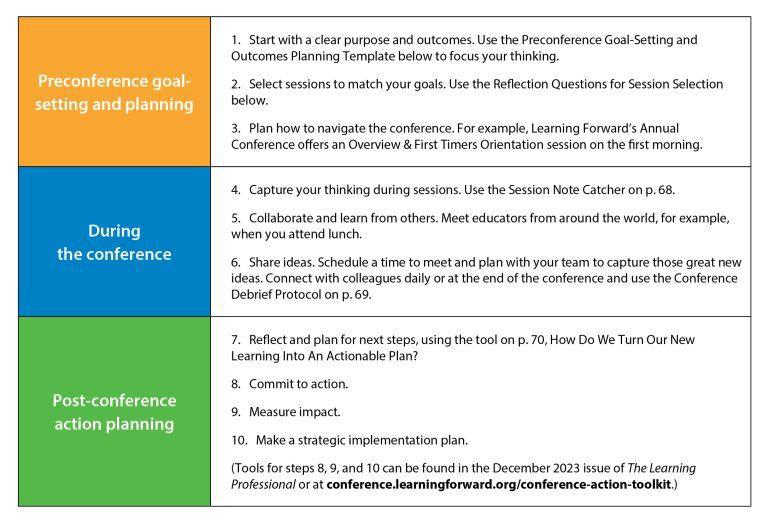
Source: The Learning Professional



